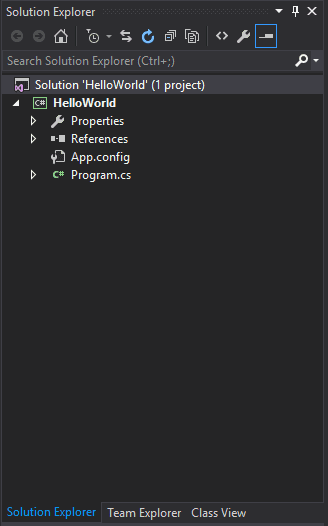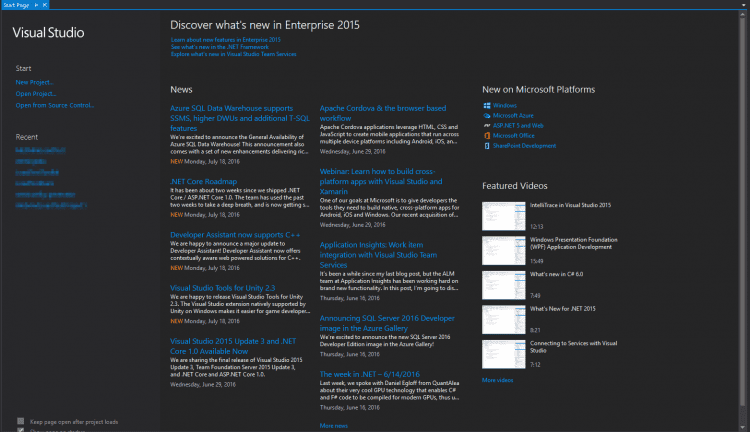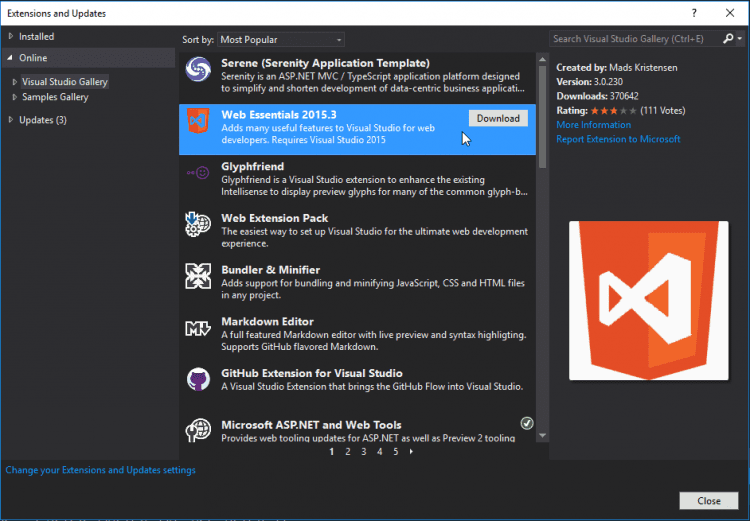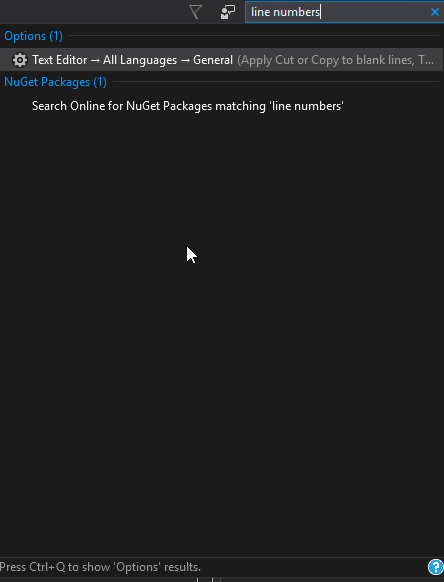Here recently I began developing Windows and web applications in C#. First I started off with Windows console applications and then I worked my way up to building out an entire workout log web application. Along the way, I did some testing and debugging of my applications. Believe it or not, I was able to completely develop, test, and deploy all of my applications with just one single program. This program is Visual Studio, which is an IDE developed by Microsoft for the Windows platform.
What is an IDE
IDE stands for Integrated Development Environment. IDE’s are like text editors but have many of their features built in to help with developing. They typically include things such as:
- Source code editor with code linting
- Code completion
- Debugger
- Build Automation
- Deploy Automation
What Can I do with Visual Studio
With Visual Studio you have all of the capabilities of a typical IDE that can help you when creating:
- Web Applications
- Windows Store Applications
- Windows Desktop Applications
- Mobile apps for Windows Phone, iOS, and Android
How Much Does It Cost
Visual Studio’s pricing starts at $499 for the Professional Edition and goes as high as $5999 for the enterprise edition. Luckily Microsoft has released Vis
ual Studio Community Edition, which is free. The community edition provides everything you need to get started with developing your applications.What Are the Requirements
To install and run Visual Studio Community Edition you will require the following:
- Windows 7 or greater
- 1.6 Ghz or faster processor
- 1 GB of RAM
- 4 GB of hard disk space
- 5400 RPM disk drive
- DirectX 9 capable video card that runs at 1024 x 768 or higher display resolution
Where Can I Get It
Visual Studio community edition is obtained at Visual Studio’s website.
Basic Tour
- Solution Explorer – This is where you will find the files in your project.

- Start Page – This is where you will be taken to when you start Visual Studio.

- Output Window – Displays status messages from Visual Studio

- Package Manager Console – Powershell console used to send commands to NuGet.

- Extensions and Updates – Place to install update and extensions to Visual Studio or your application.
In the Tools menu, you will find Extensions and Updates.

- Quick Launch – Very useful search bar to find settings or help you with developing.

For example, you can search for “line numbers” and be given a result for setting the line numbering.

Essential Keyboard Shortcuts
This list is not a complete list of keyboard shortcuts by far, but these are the ones I find myself using the most. For a more comprehensive list of keyboard shortcuts for Visual Studio check out Microsoft’s list.
| Key Combo | Command |
|---|---|
| F5 | Run the application in debug mode |
| Ctrl + F5 | Run the application without debugging |
| Shift + F5 | Stop the debugging session |
| Ctrl + Shift + B | Build application without running |
| Ctrl + Tab | Cycle through the open tabs |
The purpose of this article is to show you the basics of getting started with Visual Studio so that you can get started making the next big thing. I find myself using it more and more as I continue to create windows and web application in C#. As always, If you have any questions or comments, please leave a comment below. I would love to hear from you.
